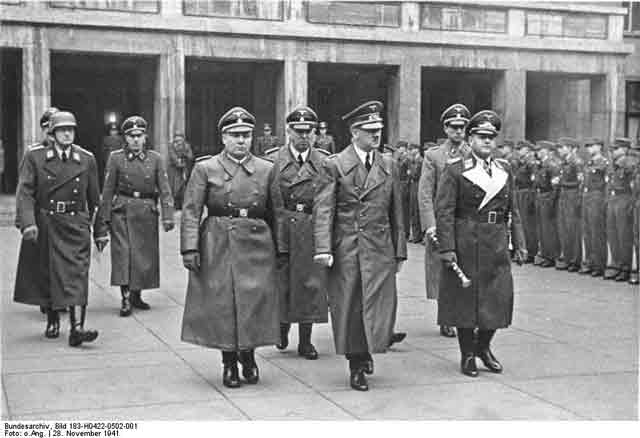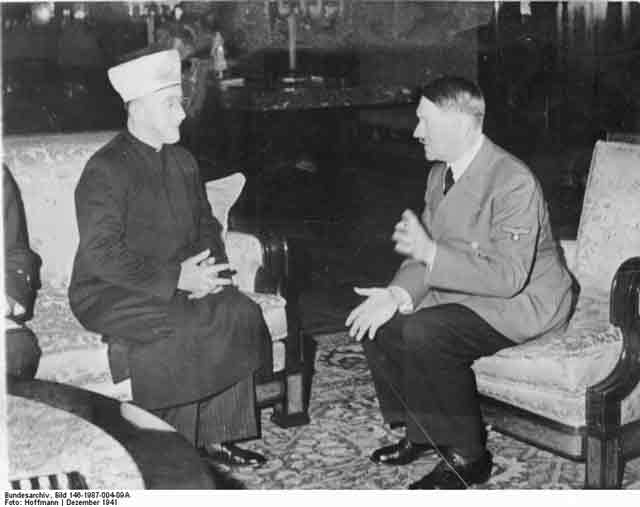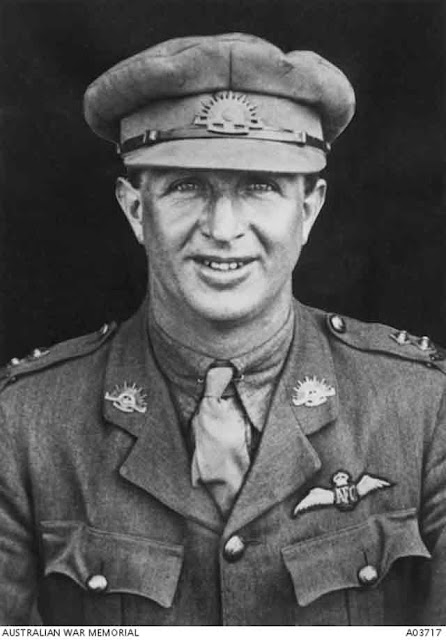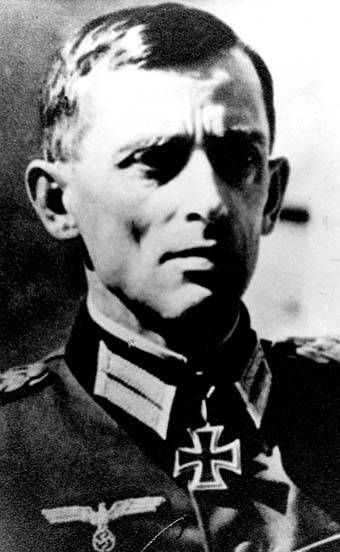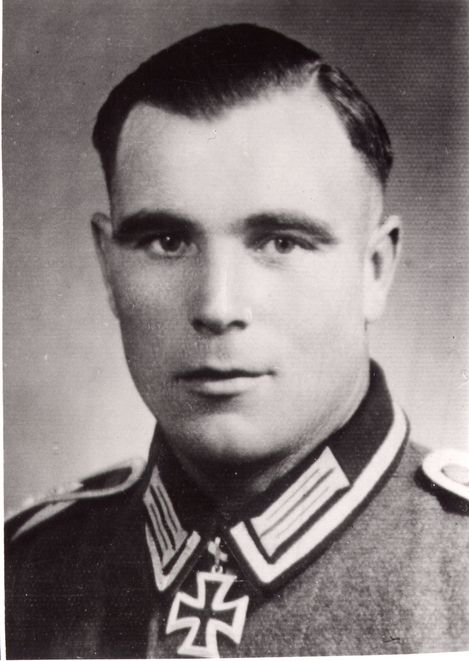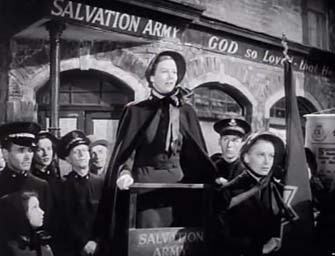Friday 1 August 1941
 |
| A Finnish soldier with a Carcano rifle on August 1, 1941 (SA-Kuva). |
Eastern Front: In the Far North sector on
1 August 1941, Finnish II Corps continues its new offensive toward Lake Ladoga. The defending Soviet 198th Motorized Division is in full retreat. The Finns have benefited from having captured a copy of Soviet plans for a counteroffensive. The first Finnish objective is the town of Lahdenpohja on the extreme northern shore of Lake Ladoga. Capturing it will cut the preferred retreat route for Soviet forces still holding out to the northwest and force them to fall back on Leningrad - if that route is not also cut by then.
The Germans are still determined to cut the Murmansk railway in the "waist" of the country despite the fact that its offensive has stalled east of Salla. The goal is Kandalaksha (Belomorje), which does not appear very far away on the map but requires crossing rough terrain full of positions favoring the defense. General von Falkenhorst is pressuring XXXVI Corps commander, General Hans Feige, to get moving. Feige takes a calculated risk and thins his front in order to make a flanking thrust east with the Finnish 6th Division in the south. As the Soviets withdraw, Feige plans to take all of the German 169th Division and create a pincer from the north. The plan depends upon the Soviets being caught by surprise and being leveraged out of their prepared defenses by the threatening Finnish flanking move.
In the Army Group North sector, the German 16th Army (Colonel-General Ernst Busch) continues attacking toward Staraya Russa south of Lake Ilmen.
In the Army Group Center sector, fierce fighting continues in the vicinity of the Smolensk pocket of trapped Soviet troops. The trapped Soviets bitterly defend Orsha and Vitebsk, while also continuing fierce counterattacks against the advanced Panzer Group 2 position at Yelnya. Soviet attacks along the northern edge of the Pripet Marshes are beaten off. German XXIV Armeekorps (General Geyr von Schweppenburg) advances from a bridgehead on the Sozh River and against the eastern flank of the trapped 28th Army and Group Kachalov. General Guderian's Panzer Group 2 is attacking toward Roslavl.
In the Army Group South sector, the Germans are getting closer to encircling the massive Soviet troop concentration at Uman. Panzer Group 1 (General von Kleist) is advancing to meet advance elements of the 17th Field Army. A secondary meeting between the German 16th Panzer Division and Hungarian Mechanized Corps (Gyorshadtest) also is nearing completion. The Soviets are forbidden to retreat, and at least are buying time for the Stavka to form a defensive line on the far side of the Dnieper River.
Soviet General Kirponos launches a counterattack by the 5th Army against the flank of the German Sixth Army (General von Reichenau). The attack is centered around Malin south of the Pripet Marsh. The German line bends but does not break, while advances to the east continue at Dubossary on the far side of the Dniester and elsewhere.
German fighter squadron JG 54 gets its 1000th victory when Lt. Max-Hellmuth of 7./JG 54 downs a Russian DB-3 near Luga.
 |
| F-32 Armed KV-1 Model 1940 knocked out and ready for a tow in Korkino in the Tosnensky District, Leningrad Oblast in August 1941. Note the numerous shell hits. |
European Air Operations: Operations continue to be light after an extended period of poor flying weather. The RAF resumes Operation Channel Stop with a Circus attack by three Blenheim bombers with heavy fighter escort on shipping off Nieuport. The attack is unsuccessful and the RAF loses two bombers.
RAF No. 133 Squadron becomes active. It is to be composed of volunteer American pilots and is one of the "Eagle" squadrons (the first two being Nos. 71 and 121 Squadrons). 133 Squadron actually is an old World War I squadron that was disbanded on 4 July 1918. The squadron becomes the third of the Eagle Squadrons. At first, it is based at RAF Coltishall but quickly moves to RAF Duxford.
Uffz. Hugo Dahmer, of 1./JG 77 based in Norway, is awarded the Ritterkreuz.
Battle of the Baltic: Soviet motor torpedo boats attack the German 1st torpedo boat flotilla off Cape Domesnes, Latvia. The Germans sink Soviet MTB TK-122. Soviet torpedo boat TK-74 sinks German minesweepers RA-53 and 55, though it is unclear if this is during the same engagement. The Soviets also lose torpedo boat No. 123 on this date.
Before dawn, Luftwaffe KG4 lays 38 LMB imines in the mouth of the Triigi River, while later the German 2nd S-Boat Flotilla lays 24 TMB mines off Dago Island and Muhu (Moon) Island.
 |
| German coastal guards at Dieppe, 1 August 1941. |
Battle of the Atlantic: Operation FB, a Royal Navy attack on Spitsbergen, continues as oiler HMS Oligarch refuels the ships at Spitsbergen.
Operation EF, the Royal Navy raid on Petsamo and Kirkenes, is largely concluded. Aircraft carrier Furious and its support vessels depart the area for Scapa Flow, while carrier Victorious remains in the area roughly 40 miles northeast of Bear Island. Minelayer Adventure, detached from the force, arrives safely in Archangel carrying a cargo of parachute mines.
The Luftwaffe bombs and badly damages 4317-ton Royal Navy submarine HMS Trident in the Tyne. The entire crew has time to abandon ship and be rescued before Trident sinks on 2 August.
British freighter Kwaibo runs aground and is written off in the Calabar River, Nigeria.
U-331 (Kptlt. Hans-Diedrich Freiherr von Tiesenhausen) joins the list of U-boats refueling from "interned" German supply ship Thalia in Cadiz.
US Task Group TG 2.5 is on patrol out of Hampton Roads, Virginia. It is led by aircraft carrier Yorktown (CV-5).
US transport USS West Point (AP-23) arrives safely in New York from Lisbon carrying American and Chinese consular personnel who have been ordered to leave Germany, Italy and occupied Europe.
The German B-Dienst naval intelligence service identifies the location of Convoy SL-81 and sends the information to the U-boat command in Paris. The Germans set up a U-boat picket line to intercept the convoy.
Convoy HX-142 departs from Halifax bound for Liverpool, Convoy SC-39 departs from Sydney, Cape Breton, Nova Scotia, Canada bound for Liverpool.
Canadian armed yacht HMCS Vencedor is commissioned (formerly Exmouth II).
US Navy submarine USS Marlin (Lt. George A. Sharp, Jr.) is commissioned, anti-aircraft cruiser Reno is laid down.
U-154 (K.Kapt. Walther Kölle) is commissioned, U-198, U-226, and U-266 are laid down.
 |
| Cruiser Mk V Covenanter III tanks of British 9th Queen's Royal Lancers on exercise, Tidworth, Wiltshire, England, United Kingdom, 1 August 1941. |
Battle of the Mediterranean: Italian submarine Delfino shoots down an RAF Short Sunderland flying boat of No.230 Squadron boat north of Bardia while the plane is dropping six depth charges at it. The Royal Navy sends out destroyers HMS Jackal, Jervis, Kingston, and Nizam to search for the submarine, but it escapes. This is the first time a submarine shoots down a flying boat. The Delfino picks up four survivors of the downed flying boat.
Operation Style, a Royal Navy convoy mission to Malta, continues. Before dawn, aircraft carrier Ark Royal launches nine Swordfish against Alghero airfield on Sardinia as a diversion. One of the Swordfish crashes while returning to the carrier, killing the 3-man crew and two men on the flight deck. The main body of the convoy continues toward Malta unmolested.
The RAF sends nine Blenheim bombers to attack German army vehicles at Sidi Omar. The RAF continues night attacks against the harbors at Benghazi and Derna.
Operation Guillotine, the British reinforcement of Cyprus, continues with corvette HMS Hyacinth escorting transport Salamaua from Port Said to Famagusta.
Royal Navy troopship Glenearn, damaged in the Luftwaffe raid of 14 July 1941 on Suez, Egypt, is taken in tow by 6169-ton freighter City of Kimberley for repairs at Bombay, India.
The nightly supply run to Tobruk is by destroyers Decoy and Hero.
Royal Navy submarine Thunderbolt departs from Gibraltar carrying a load of aviation fuel for Malta.
At Malta, three RAF No. 82 Squadron Blenheim bombers attack Lampedusa. One is hit by anti-aircraft fire and crash-lands in the sea. Everyone survives.
Battle of the Black Sea: The Red Air Force attacks Constanza, Romania, causing damage to harbor and oil facilities. This is the first use during the war of airplanes - where bombers are modified to carry fighters and launch them near a target to extend their range. Tupolev TB-3 bombers are used to carry modified Polikarpov I-16 fighters. In this mission, two Zveno-SPB (a variant of the TB-3 aircraft), each carrying two I-16 fighter-bombers, destroy an Axis oil depot in Constanta County, Romania. All Soviet aircraft return to base safely.
This is the culmination of a decade-long Soviet preparation of such forces. While the operation concludes successfully, the use of such parasitic aircraft in an offensive role is never repeated by the Soviets, perhaps because it makes more sense just to have the bombers themselves bomb the targets.
War Crimes: German General Alexander Andrae, the new commander-in-chief on Crete, approves of further repressive measures against the population of Crete in retaliation for its opposition to Operation Mercury in May. Accordingly, today the Germans conduct the second wave of executions at Alikianos, which previously saw dozens of civilians executed in June. The Germans gather 118 civilians at a bridge over the Keritis River near Alikianos, force them to dig their own graves, and then shoot them.
The dead are from Aliaknos (12) and nearby villages Fournes (Greek: Φουρνές), Skines (Σκηνές), Vatolakos (Βατόλακκος), Koufo (Κουφό), Prases (Πρασές), Karanou (Καράνου), Lakkoi (Λάκκοι), Orthouni (Ορθούνι), Nea Roumata (Νέα Ρούματα) and Hosti (Χωστή).
A monument commemorating this execution stands near the Keritis bridge.
Spy Stuff: The Japanese Imperial Navy changes its operating code from B.6 to B.7 of JN.25. This requires US Navy cryptographers to seek ways to break this new code, which they have difficulty doing.
The Japanese continue keeping a close eye on US military activities throughout the Pacific. Today, the Manila embassy reports the arrival of US liner President Coolidge.
 |
| Experimental Lockheed XJO-3 in 1938. |
Applied Science: United States researchers begin testing a specially modified Lockheed Electra XJO-3 that has been equipped with an AI-10 microwave radar installed for airborne testing. The radar has been developed by Radiation Laboratory from MIT. The flight tests are made out of Boston Airport. The radar includes a PPI (Plan Position Indicator) for display. During testing, which continues until 16 October 1941, the microwave radar detects aircraft at a range of 3.5 miles and ships at 40 miles (64 km). Among the advantages of this radar is that it enables pilots to plan approaches on aircraft from miles away in all weather conditions.
Anglo/Finnish Relations: Following the British raid on Petsamo and Kirkenes on 31 July, Finland completely severs relations with the UK and closes the British legation in Helsinki. The British do likewise. Finland previously had "paused" relations, but with some prospect of restoring them. The raid, however, ends that possibility despite the fact that the British achieved very little by it. From the Finnish perspective, the raid was completely unjustified, as it views the Continuation War as separate and apart from Operation Barbarossa. The West, however, views the Finnish Army as nothing but an arm of the Wehrmacht seeking world domination. The move pleases the Germans, who have been pressuring Finland to terminate relations with the UK.
Anglo/Soviet Relations: British Prime Minister Winston Churchill sends a message to Soviet Premier Joseph Stalin that is received today. This is one in a long line of such messages to which Stalin does not respond. This one states that "Following my personal intervention," the UK is sending 10,000 tons of rubber by sea. This, Churchill adds, is in addition to 10,000 tons already on its way.
US/Soviet Relations: Having completed his talks with Stalin to set up lend-lease deliveries, President Roosevelt's personal emissary, Harry Hopkins, departs from Moscow and heads back to the United Kingdom by air.
 |
| German crew sighting the 20mm cannon on a Bf 109F fighter of JG 54 'Grünherz' fighter wing, near Leningrad, Russia, Aug 1941 (Federal Archive, Bild 101I-390-1220-19). |
US/Japanese Relations: The Japanese Foreign Office opens discussions with the US State Department on ways to resume passenger service between the US and Japan.
The Japanese Board of Information publishes an
article in the Tokyo Gazette that justifies the recent Japanese advance into French Indochina. It calls the situation in the country "complicated and chaotic" and claims that the Nationalist government in Chungking had its own designs on Indochina. The French simply have come to recognize the "ring of hostile nations" surrounding Indochina which is "jeopardizing its self-preservation and defense." The Japanese "reinforcement" of Indochina thus was "no more than an action calculated to remove the menace" posed by China and its allies Great Britain, the United States, and the Netherlands.
The US imposes an oil embargo against Japan for being an aggressor state in Asia.
Japanese/Thai Relations: Japanese Foreign Minister Toyoda is negotiating with the Thai government to set up a funding mechanism for Japanese purchases of Thai goods despite the recent British fund-freezing of Japanese accounts. The two sides reach a tentative agreement today by which Thai currency laws would be revised to permit a large loan by Thailand to finance Japanese purchases. All that remains to be settled are the rate of interest and time limit on such a loan, and that is soon overcome. The 10,000,000 baht loan is finalized on 2 August.
Thailand officially recognizes the Japanese puppet state of Manchukuo.
German/Japanese Relations: Japanese Ambassador to Germany Oshima cables to Tokyo that a "reliable German source" has told him that Soviet casualties had reached 2.5 million men. The Germans also tell Oshima that the Wehrmacht already has reached Leningrad, but that can't be revealed publicly until the city actually is taken. Furthermore, the Germans claim to have destroyed 10,000 Red Air Force planes. The Germans claim that negative reports about fighting in the USSR are due to Allied attempts to woo neutrals such as Turkey. The Hess flight to Scotland is explained away as a failed attempt to gain British assistance in the fight against communism in the Soviet Union.
The Germans clearly are feeding Oshima lies or at least exaggerations in an attempt to create the impression that the Soviet Union is closer to defeat than it actually is. For instance, the Wehrmacht is still far away from Leningrad and is not in the practice of "withholding" news of military achievements.
Danish/Japanese Relations: Denmark establishes diplomatic relations with the Japanese puppet state of Manchukuo.
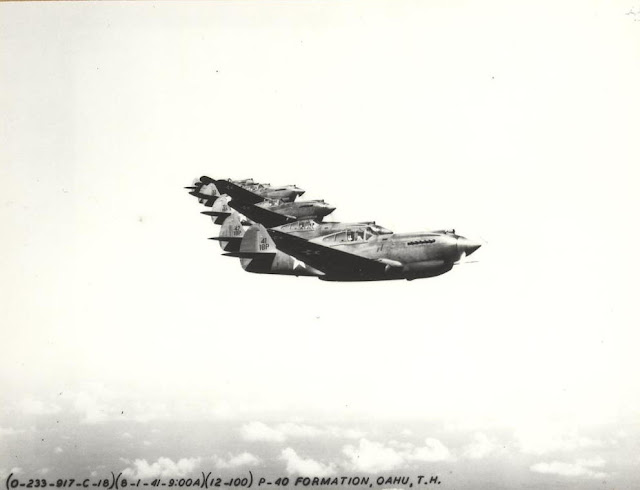 |
| P-40s over Oahu (Hawaii Aviation). |
US Military: Naval Air Station Midway is established on Midway Island. While geographically a part of the Hawaiian chain, Midway heretofore has been used primarily as a way-station for commercial flying boats crossing the Pacific. NAS Midway run by Commander Cyril T. Simard.
The first mass-produced military jeep is completed at Willy's Overland factory in Toledo, Ohio. This is generally considered the jeep's "birthday," though it has been in development for some time.
Major General Jacob L. Devers is named by General Marshall as Chief of the Armored Force. Devers' new headquarters is at For Knox, Kentucky. He replaces Major General Adna R. Chaffee, Jr., who is terminally ill with cancer. General Devers has the 1st Armored Division at Fort Polk, Louisiana, the 2nd Armored Division at Fort Knox, and an independent tank battalion at Fort George Meade, Maryland, the 70th Tank Battalion. Devers quickly takes up planning for a large-scale wargame called the Louisiana Maneuvers to begin later in August 1941.
Japanese Military: Imperial Japanese Navy 6863-ton seaplane tender Kimikawa Maru completes her conversion at Kure, Japan. It embarks six "Jake" reconnaissance floatplanes with two in reserve and is assigned to the Sasebo Naval District.
Soviet Military: Stalin, impressed by tests of rocket-powered fighters, issues an order dated today that calls for a prototype to be developed within a month.
Stalin appoints General Vasilevsky Head of the Operations Directorate for the General Staff General Pavel Batov is appointed Deputy Commanding Officer of the 51st Army.
 |
| Sheet music for "Too Many Blondes," released 1 August 1941 and starring Rudy Vallee and Helen Parrish. Vallee will enlist in the United States Coast Guard and become a Lieutenant in charge of a 40-piece band. |
German Military: The 5th Light Division, serving with the Afrika Korps, is redesignated 21st Panzer Division.
Walter Grabmann becomes commanding officer of the prestigious Zerstörerschule 2 training unit based in Memmingen, Germany.
Around this time, Joachim Peiper returns from
Heinrich Himmler's personal staff to an informal position within the SS Division Leibstandarte SS Adolf Hitler (LSSAH). Peiper previously served with the LSSAH as a platoon leader during the Battle of France but returned to Himmler's staff as his first adjutant thereafter. Throughout the war, Peiper alternates between the LSSAH and Himmler's staff, often working on both at the same time. Officially, Peiper does not formally transfer to the LSSAH until October, but he appears to "free-lance" as an observer there with Himmler's approval. Thus, he likely is lurking around the LSSAH during this time though not officially within the chain of command there.
New Zealand Military: Lieutenant General Edward Puttick, commander of the 2nd New Zealand Division serving in Egypt, is chosen as the new Chief of the General Staff by Prime Minister Peter Fraser, who is visiting Puttick's headquarters in Cairo. He cannot take up the position until he returns to New Zealand in September 1941.
Australian Military: The RAAF No. 20 Squadron forms at Port Moresby, New Guinea. It is equipped with Catalina and Empire flying boats.
 |
| Cecilia Parker and Gale Storm in "Gambling Daughters," released on 1 August 1941 (Producers Releasing Corporation). |
China: The Japanese launch the "Three All" campaign ("Loot all, Kill all, Burn all") against Communist Chinese troops in the Shansi-Chahar-Hopeh border area. This is a controversial campaign in the sense that widely varying estimates of the number of people killed have been put forth, from one million killed up to many multiples of that. It is undeniable that the Japanese kill large numbers of civilians while engaging in a "scorched earth" policy.
The Japanese also are attacking in Yunnan Province and further south.
Generalissimo Chiang Kai-shek, the leader of the Nationalist government at Chungking, issues an order establishing the American Volunteer Group ("Flying Tigers"). It provides in part:
Col. Chennault will organize this group with the American Volunteers now arriving in China to participate in the War.
Claire L. Chennault, the AVG leader, reports directly to Chiang Kai-shek. He cooperates with the Chinese Air Force and takes support from it but does not take operational orders from anyone but Chiang. Since Chiang does not speak English and Chennault does not speak Chinese, all communications flow through Madame Chiang. Incidentally, the "Colonel" in the Chiang order appears to be an honorific, as Chennault is not a member of the Chinese Air Force (at least according to any known documentation) and at this time is a retired Captain of the USAAF (cashiered out in 1937 due to deafness). Chennault himself simply calls himself a civilian advisor or contractor operating under a contract for pay, a forerunner of such arrangements that become widely used decades later. He is an old "China hand" who has been there since leading the USAAC in order to train Chinese pilots.
Holocaust: The Germans establish ghettos at Lviv and Bialystok. The Bialystok Ghetto, which is divided by the Biala River, quickly has a population of 50,000 people, and has two gates, with a third added later.
At Kishinev, Romania, executions proceed of at least 1000 Jews.
Shmuel Verble, chairman of the Jewish Council (Judenrat) in the Ukrainian village of Kamien Koszyrski (Kamen-Koshirsk), volunteers for death after discovering an execution list with the names of 80 ghetto residents. Joining the 80 Jews being executed, he instructs his children: "Children, be good Jews. If you can, take revenge!"
 |
| A Royal Canadian Mounted Police constable and a Vermont State Police trooper before the official ceremony commemorating the joining of the Portland–Montreal Pipe Line. August 1, 1941 (Credit: National Film Board of Canada. Photothèque / Library and Archives Canada). |
American Homefront: New York Yankees pitcher Lefty Gomez beats the St. Louis Browns 9-0. He sets a mark for most walks given in a shutout with 11. He gets the shutout by stranding 15 Browns baserunners.
Senator Gerald P. Nye of North Dakota gives a
radio address from St. Louis in which he decries the "madness" of current US policy toward the current conflicts around the world. He argues that "any emergency confronting our country is immeasurably less than it was a year ago" due to increased US preparedness and "potential enemies growing weaker with every hour of war abroad." He concludes that it is time for "freedom from foreign influence" and that the United States should not be "waiting for the cue that Churchill gives."
Paramount releases "Kiss the Boys Goodbye," a comedy directed by Victor Schertzinger based on a play by Clare Boothe Luce. While this sounds like a service film, in fact, it is loosely based on the search for the lead role in "Gone With The Wind" in 1939. Mary Martin stars as Cindy Lou Bethany, while Don Ameche and Oscar Levant play supporting roles.
Monogram Pictures releases "Bowery Blitzkrieg," the latest (sixth) in the East Side Kids film franchise. As with the others in the series, it stars Leo Gorcey. This is Huntz Hall's first East Side Kids film ("Introducing Huntz Hall"). Hall is a veteran of Universal's Dead End Kids and Little Tough Guys series, which also feature former Dead End Kids, so he is a familiar face in this type of film even though technically this is his first film in the series. He appears as "Limpy," though that changes to "Gimpy" in subsequent films in the series. Keye Luke also makes an appearance.
Universal releases "Too Many Blondes" starring Rudy Vallee, Helen Parrish, and Lon Chaney, Jr.
Producers Releasing Corporation releases "Gambling Daughters." Starring Cecilia Parker, "Gambling Daughters" revolves around college girls forced to steal from their parents to feed their gambling addiction - until they take revenge upon the gamblers.
Future History: Ronald Harmon Brown is born in Washington, D.C. He goes on to become US Secretary of Commerce under President Bill Clinton in January 1993. Brown perishes on 3 April 1996 a few kilometers north of Dubrovnik Airport when his US Air Force CT-43 (a modified Boeing 737) crashes into a mountainside in Croatia.
Francine Canovas is born in Oujda, Morocco. Francine becomes a top French model and actress and marries actor Alain Delon. She is better known as Nathalie Delon and is retired as of this writing in 2018.
 |
| Braunschweig.- Alley in the old town with half-timbered houses (suitcase and leather goods business Habermann). In the background is the Church of St. Katharine (Proietti, Ugo, Federal Archive, Bild 212-268). |
July 1941July 1, 1941: US TV Broadcasting StartsJuly 2, 1941: MAUD ReportJuly 3, 1941: Stalin SpeaksJuly 4, 1941: Pogroms in Eastern EuropeJuly 5, 1941: Germans on ScheduleJuly 6, 1941: Australians Attack DamourJuly 7, 1941: US Marines in IcelandJuly 8, 1941: Flying Fortresses In ActionJuly 9, 1941: British Take DamourJuly 10, 1941: Sword and Scabbard OrderJuly 11, 1941: Cease-fire in Syria and LebanonJuly 12, 1941: Anglo/Russian Assistance PactJuly 13, 1941: Uprising in MontenegroJuly 14, 1941: Katyusha Rocket Launchers in ActionJuly 15, 1941: Smolensk FallsJuly 16, 1941: Stalin's Son CapturedJuly 17, 1941: Heydrich Orders Mass ExecutionsJuly 18, 1941: Twin Pimples RaidJuly 19, 1941: V for VictoryJuly 20, 1941: The Man Who Wouldn't ShootJuly 21, 1941: Moscow in FlamesJuly 22, 1941: Soviet Generals ExecutedJuly 23, 1941: Secret Plan JB 355July 24, 1941: Operation SunriseJuly 25, 1941: US Naval AlertJuly 26, 1941: Italian E-Boat Attack on MaltaJuly 27, 1941: MacArthur ReturnsJuly 28, 1941: Auschwitz ExterminationsJuly 29, 1941: Rescue From CreteJuly 30, 1941: Raid on Petsamo and KirkenesJuly 31, 1941: Final Solution OrderAugust 1941
August 1, 1941: More Executions on CreteAugust 2, 1941: Uman Encirclement ClosesAugust 3, 1941: Bishop von Galen Denounces EuthanasiaAugust 4, 1941: Hitler at the FrontAugust 5, 1941: Soviets Surrender at Smolensk August 6, 1941: U-Boats in the ArcticAugust 7, 1941: Soviets Bomb BerlinAugust 8, 1941: Uman Pocket CapturedAugust 9, 1941: Atlantic Conference at Placentia BayAugust 10, 1941: Soviet Bombers Mauled Over BerlinAugust 11, 1941: Rita Hayworth in LifeAugust 12, 1941: Atlantic Charter AnnouncedAugust 13, 1941: The Soybean CarAugust 14, 1941: The Anders Army FormedAugust 15, 1941: Himmler at MinskAugust 16, 1941: Stalin's Order No. 270August 17, 1941: Germans in NovgorodAugust 18, 1941: Lili MarleenAugust 19, 1941: Convoy OG-71 DestructionAugust 20, 1941: Siege of Leningrad BeginsAugust 21, 1941: Stalin EnragedAugust 22, 1941: Germans Take CherkassyAugust 23, 1941: Go to KievAugust 24, 1941: Finns Surround ViipuriAugust 25, 1941: Iran InvadedAugust 26, 1941: The Bridge Over the DesnaAugust 27, 1941: Soviets Evacuate TallinnAugust 28, 1941: Evacuating Soviets SavagedAugust 29, 1941: Finns take ViipuriAugust 30, 1941: Operation AcidAugust 31, 1941: Mannerheim Says No2020
